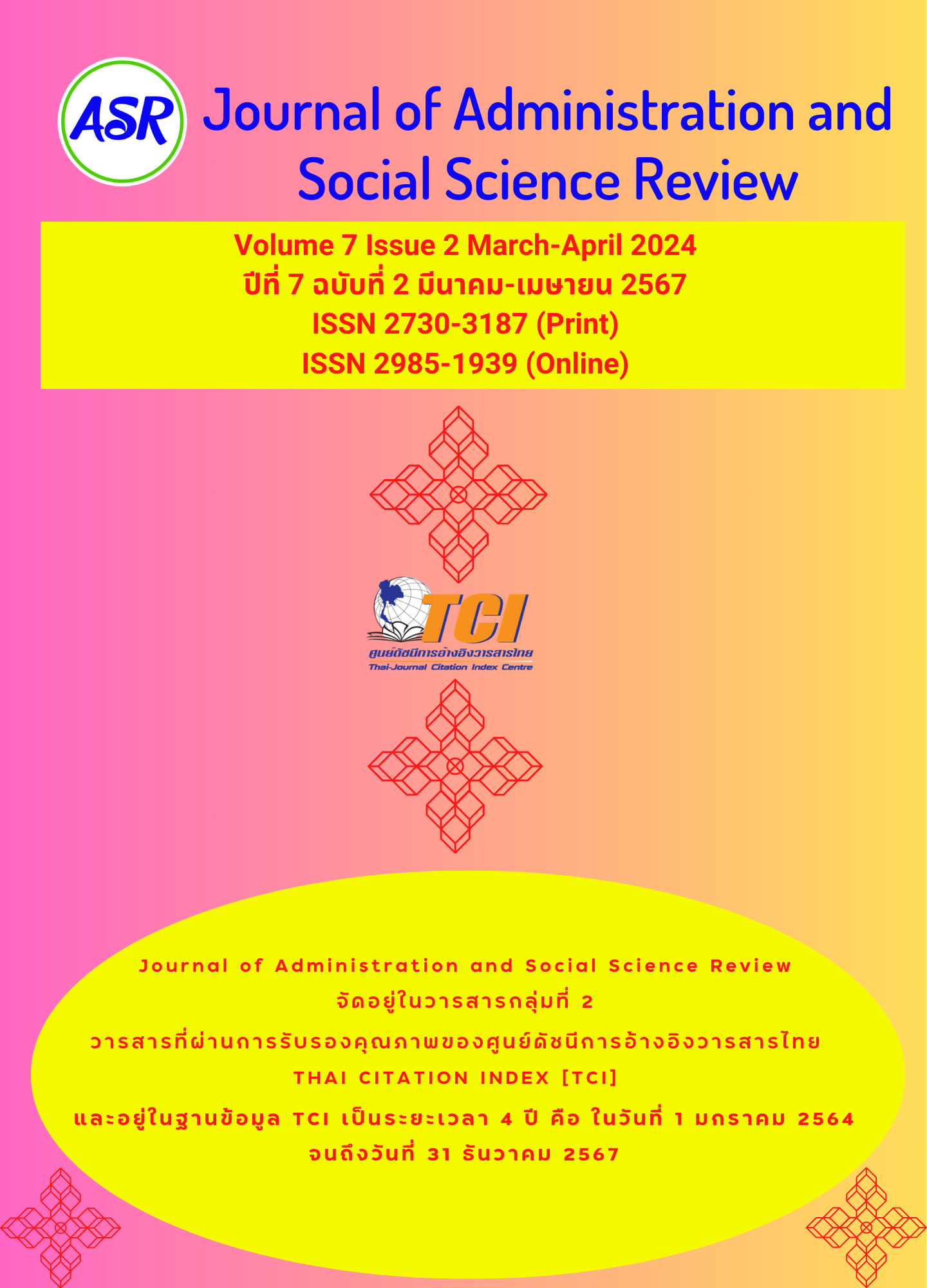Executive Leadership Affecting Conflict Management at Schools under the Bueng Kan Primary Educational Service Area Office
Keywords:
creative leadership, teacher performance motivation, school administratorsAbstract
The purposes of this research were to study: 1) the components of executive leadership; 2) Study the level of executive leadership; 3) the level of conflict management at schools; 4) the relationship between executive leadership and conflict management in schools; 5) the predictive power of administrators' leadership affecting conflict management in schools; and 6) ways for developing the leadership of administrators affecting conflict management at schools. The sample group used in the research included school administrators under the Bueng Kan Primary Educational Service Area Office consisted of 93 people. The tools used for data collection included questionnaires. Statistical instrumentals used in data analysis included frequency, percentage, mean, standard deviation, and content analysis.
The results showed that.
- There were five elements of executive leadership.
- The overall leadership level of executives was at a moderate level.
- The overall level of conflict management at the school was at a moderate level.
- Executive leadership and conflict management at the schools had a positive relationship is at a moderate level.
- Executive leadership, Ideological influence, and vision for the conflict management were at schools at 44.60%.
- Guidelines for developing the leadership of administrators affecting the conflict management at the schools had two aspects: influence with ideology; and a vision.



